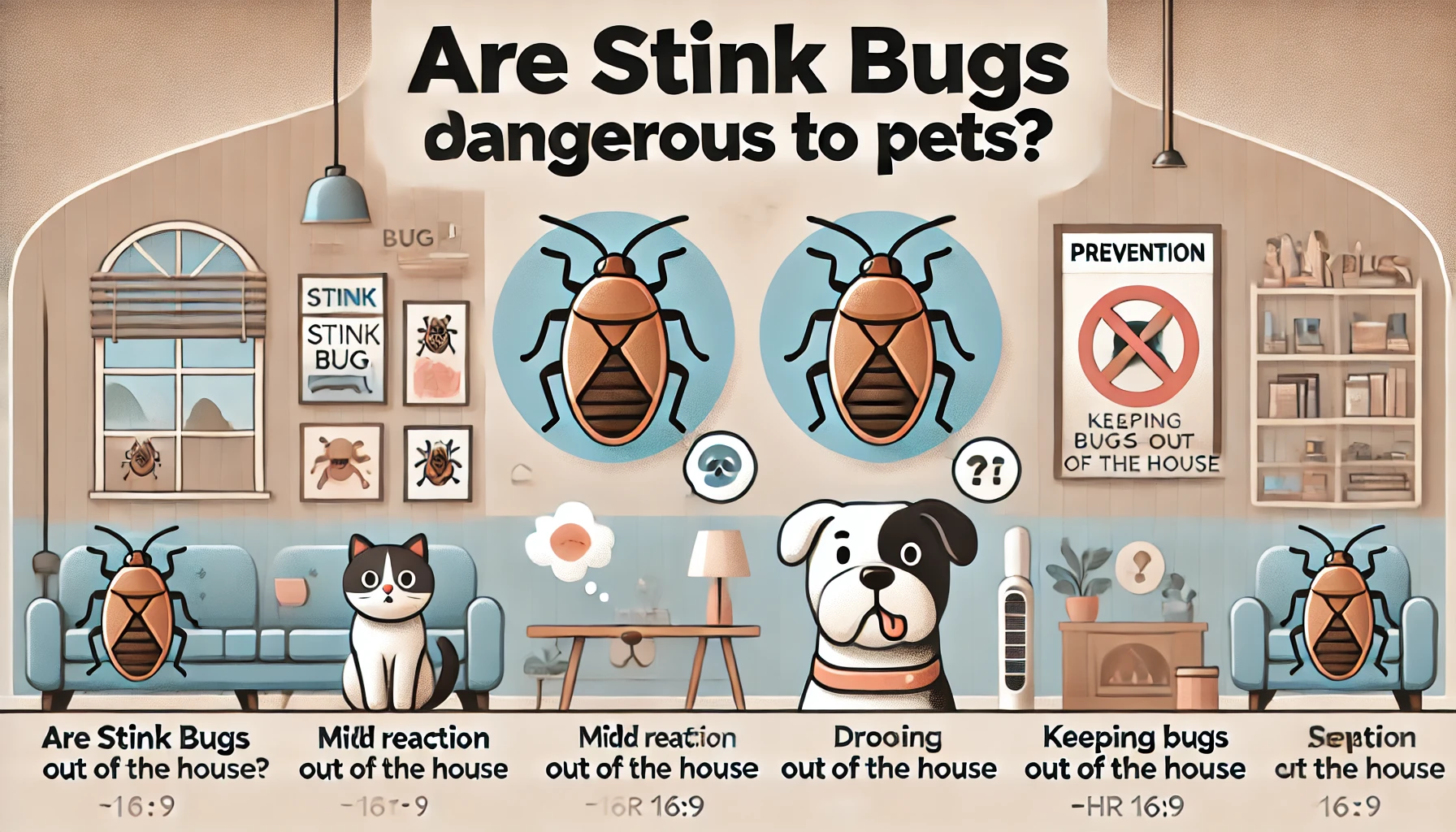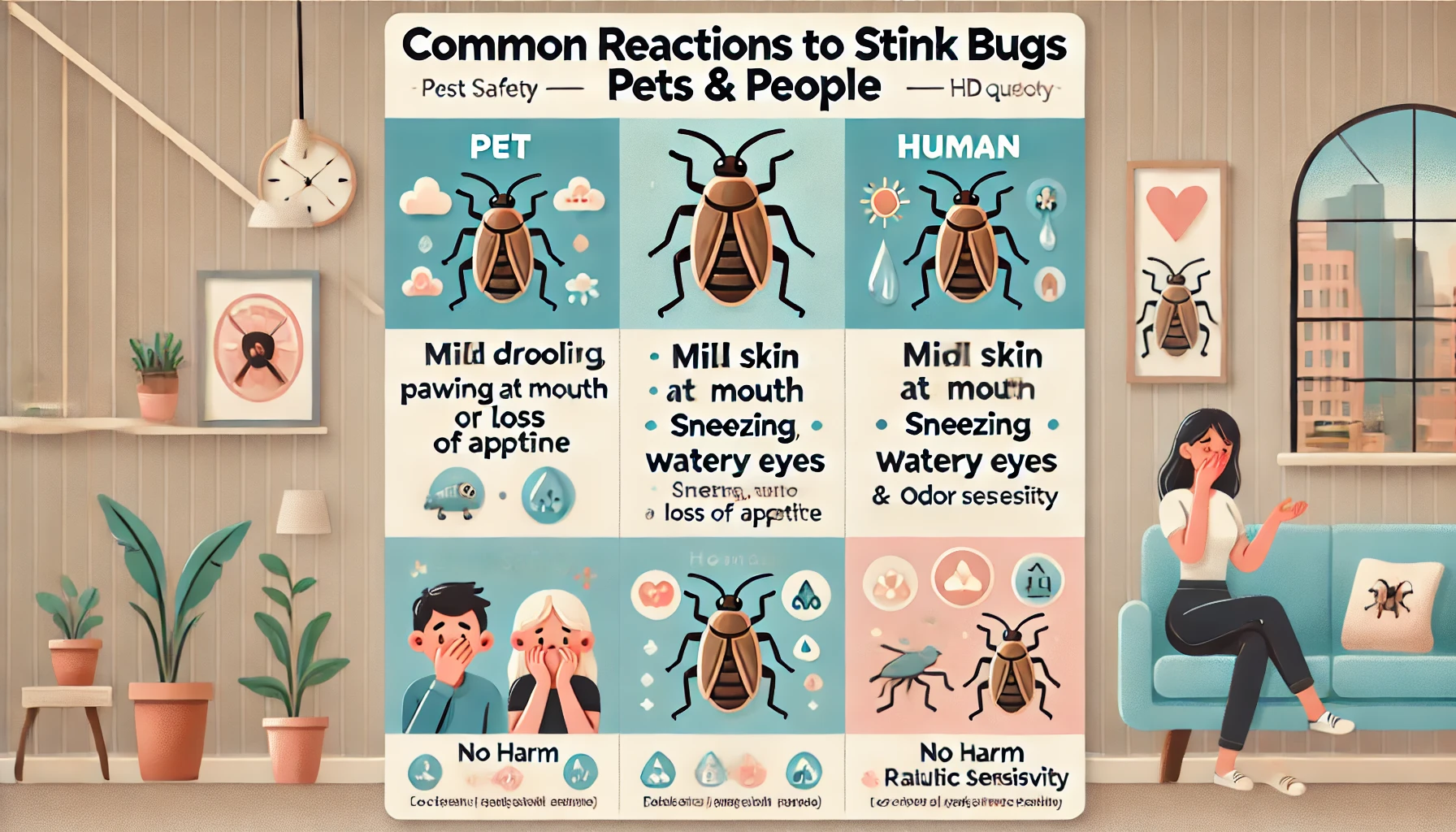Key Takeaways
-
Stink Bugs Aren’t Toxic, but They’re Irritating: Pets may drool, vomit, or paw at their mouths after contact, but symptoms usually pass quickly.
-
Pets Are Naturally Curious: Stink bugs are slow and clumsy—perfect targets for playful pets like cats and dogs.
-
Seasonal Patterns: These bugs tend to invade homes in late summer and fall, increasing encounters with indoor pets.
-
Prevention Is Crucial: Sealing cracks, managing lighting, and keeping interiors clean helps stop stink bug invasions.
-
Pet Training Helps: Teaching commands like “leave it” or “drop it” can prevent pets from snacking on bugs.
-
Professional Help May Be Worthwhile: If infestations persist, consult pet-safe pest control services to manage the issue long-term.
 Most houses in the United States are infested with stink bugs, especially the pesky Brown Marmorated kind. When the weather gets in a chill mode, have you ever try to notice these shield-shaped invaders hovering noticeably near your windows? Their notorious smell is not pleasant, and they’re repulsive. What’s even more troubling, though? Your furry friends’ curiosity toward these insects. Could stink bugs harm your pets?
Let’s slow down a bit and talk this through. In this guide, we’ll unpack how stink bugs interact with pets, what to watch out for, and straightforward steps you can take to ensure your beloved dogs and cats stay comfy and bug-free.
Most houses in the United States are infested with stink bugs, especially the pesky Brown Marmorated kind. When the weather gets in a chill mode, have you ever try to notice these shield-shaped invaders hovering noticeably near your windows? Their notorious smell is not pleasant, and they’re repulsive. What’s even more troubling, though? Your furry friends’ curiosity toward these insects. Could stink bugs harm your pets?
Let’s slow down a bit and talk this through. In this guide, we’ll unpack how stink bugs interact with pets, what to watch out for, and straightforward steps you can take to ensure your beloved dogs and cats stay comfy and bug-free.


Not getting a solution?
Get your free pest control estimate today!Are Stink Bugs Dangerous to Pets?
Honestly, smelly insects are not toxic, and they will not bite or sting your pets. They do not even take any bad disease. But here is a catch – these small people have a unique trick to their sleeves. When threatened or squadded, they spray a sharp, bitter secretion. Imagine cutting into something to unpredictfully sour and immediate regret – it’s okay how your pets feel if they make a mushroom.Common Symptoms of Stink Bug Encounters
-
Heavy Drooling: Pets may drool excessively while trying to rid their mouth of the stink bug’s bitter taste.
-
Vomiting: Ingesting a stink bug can lead to vomiting as the body tries to expel the irritant quickly.
-
Mouth Discomfort: Pawing at the mouth or rubbing their face on furniture may signal discomfort from the bad taste.
-
Temporary Appetite Loss: A foul-tasting bug can cause pets to skip their next meal temporarily.
-
Mild Eye or Nose Irritation: Though rare, direct contact with stink bug secretions can cause minor irritation to sensitive areas.

Why Are Pets So Fascinated by Stink Bugs Anyway?
Ever wonder why do your pets chase the smelly insects in the first place? Pets, especially cats and dogs have built-in hunting instincts. You know how your cat suddenly darts after a moth or how your dog feels suffering from flies? Stink insects are slow, clumsy flying, causing them to become a major goal – like almost easy snacks or playing. It is practically unmistakable for them. The Seasonal Stink Bug Saga Here’s an another point to remember: stink bugs lead a seasonal pattern. In starting of late summer and early fall, they begin raiding homes looking for warmth. You might start noticing more stink bugs creeping indoors around this time. Your pets notice too, ramping up their curiosity—and your worry levels—simultaneously. When Should You Worry? Usually, encounters with stink bugs are harmless, just mildly unpleasant. But sometimes things can escalate quickly. Here’s when calling your vet is the right move:- Vomiting won’t stop after a couple of hours.
- Your pet seems unusually distressed or shows signs of severe pain.
- You notice breathing difficulties or swelling around your pet’s mouth or face—these might hint at a rare allergic reaction.

How to Keep Stink Bugs Away from Your Pets
Preventing stink bug invasions altogether is your best bet. So, what can you do? Let’s walk through some straightforward strategies. Seal Up Those Sneaky Entry Points You’d be surprised how tiny a crack stink bugs can squeeze through. Regularly inspect and seal gaps around windows, doors, vents, and pipes. Grab some caulk, weather stripping, or foam, and make sure your home doesn’t become their cozy winter resort. Tweak Your Outdoor Lighting Stink bugs love bright lights—especially on cooler evenings. Turn off unnecessary outdoor lights or switch to yellow bulbs, often called “bug lights,” which attract fewer insects. Simple adjustments like this can surprisingly cut down bug traffic around your home. Keep Things Tidy Regular vacuuming not only helps your home look nice—it also keeps stink bugs at bay. Vacuum carpets, sofas, and hidden corners frequently, and remember to empty the vacuum outdoors right away to avoid attracting more bugs. And don’t forget about outdoor maintenance; keeping your garden tidy and free of excess debris makes your home less inviting to pests. Capture and Release (or Just Toss Them) Spot a stink bug indoors? Quick tip: Resist the urge to squash it unless you’re ready for that awful smell. Instead, gently pick it up with tissue or tape or use a small handheld vacuum reserved for bugs. Dispose of it outdoors promptly. Train Your Pets (At Least a Little) Teaching basic commands like “leave it” or “drop it” can make a huge difference when your pet spots a bug. Sure, training might seem tedious sometimes, but honestly, it’s totally worth it during stink bug season. Offering treats and positive reinforcement can make this process surprisingly fun.Professional Help Might Be Needed
If stink bugs keep showing up despite your best efforts, it might be time to call in the pros. Just ensure the pest control company you choose uses methods safe for your pets. A good service usually offers exclusion methods—basically keeping the bugs out for good. It might feel like overkill, but it can save you from repeated headaches in the long run.
Seeing the Bigger Picture (They’re Not the Worst)
Look, stink bugs can be annoying, but compared to other pests—like spiders, wasps, or roaches—they’re really not so bad. They mostly just temporarily make your pets uncomfortable without causing any severe issues. Awareness and preventive steps can turn stink bugs from a genuine worry into another minor inconvenience. By following these practical steps, you’re keeping your home cozy and safe for you and your furry companions. Because, let’s be honest, having a happy pet is way more fun than dealing with stink bugs any day. If you feel things have gone out of control, it is advised to contact pest control professionals. Our team can provide a customized approach to protect your home effectively.Visit our Species, Control, and DIY Guide sections for additional resources on stink bugs and ways to tackle a stink infestation.





